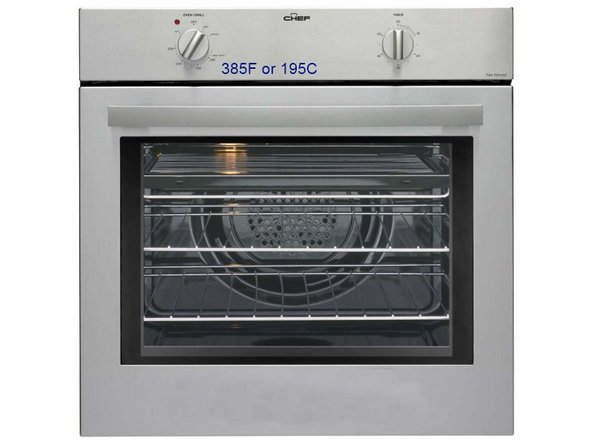Can Graphics Cards Be Repaired
Introduction
Graphics cards "fire out" and are non usable afterward 5-10 years of operation. As these "burn down outs" occur, some graphics cards can be recovered temporarily using these steps.
While post-obit this guide, be extremely careful- this procedure can potentially harm your GPU across repair. Applying heat to a video carte for a continuous amount of time will melt the solder connections and potentially repair any damaged solder points.
Alert: Be cautious of toxic gas that is created when heating upward plastic, solder, and electrical components. Always wear protective clothing and gloves when handling heated materials. Ensure you properly ventilate the area you are working in and do not exhale in toxic fumes.
-
-
Check to encounter if your warranty is valid. This can exist done by looking upwards the series number of your graphics bill of fare for retail cards in nigh situations. For OEM video cards, the warranty is tied to the organisation and may expire sooner then a retail carte du jour.
-
-
-
If the graphics carte du jour is still installed into the system, begin past removing the bill of fare.
-
Unplug all applicative cables from the graphics carte du jour as highlighted in blue, your menu may have more or less cables
-
-
-
To remove your card you'll demand to remove the screw(s) from the dorsum of the carte du jour
-
After doing and then ensure that in that location is no other things blocking the card from being removed from the motherboard
-
Remove the card from the PC
-
-
-
Precision screwdriver(south): usually Phillips #0 and/or #1.
-
Aluminum foil to encompass oestrus sensitive components while propping the card up onto the tray.
-
Thermal paste to supervene upon the paste afterwards.
-
Paper towels to rub any backlog of old heatsink compound from the components. (Booze wipes work equally-well)
-
An oven.
-
A baking tray.
-
-
-
Preheat the oven to 385F (195C).
-
Most of these temporary repairs only consist of the expanding/shrinking of bumps under the surface mountain of the graphics chip. Therefore, a lower estrus may work equally well.
-
-
-
While the oven is pre-heating:
-
Remove the screws or clips holding your fan and any duct-work to the video card.
-
Gently accept the fan/duct-work off.
-
Remove any quondam heatsink compound from the fries (using a newspaper towel).
-
-
-
Ready the timer on your oven for five -10 minutes.
-
-
-
Place the GPU on a baking canvass with the side with nearly of the chips facing up.
-
Place the blistering sheet or dish in the middle of the oven.
-
-
-
Vent the oven five - x times by opening the door. This will regulate temperature.
-
-
-
You have 2 options:
-
i. Test the card quickly without reinstalling the fan/heatsink.
-
2. Reinstall the fan/heatsink, then examination the carte.
-
Repeat steps 2-9 if GPU fails examination.
-
Proceed to stride 10 if GPU passes test.
-
-
-
Apply thermal paste onto the main scrap or on the connection side of the fan.
-
Place the estrus-sink over the GPU carefully, lining upward whatsoever screws or clips.
-
Employ heatsink on thermal pads as applicable.
-
-
-
Clean off any noticeable dust on the GPU.
-
-
-
Reinsert GPU into GPU slot on motherboard.
-
Monitor GPU temperatures while PC is at idle, opening programs, while performing intensive tasks.
-
-
-
Verify that the fan was reconnected (if there is one).
-
Verify that the fan spins when the PC is powered up.
-
Verify the GPU works and is detectable by the arrangement.
-
Embed this guide
Choose a size and re-create the code below to embed this guide as a minor widget on your site / forum.
Preview
Can Graphics Cards Be Repaired,
Source: https://www.ifixit.com/Guide/Temporarily+Repair+a+Lost+Cause+Graphics+Card+by+Heating+it+up+in+an+oven/2240
Posted by: ehlersorproclen43.blogspot.com




















0 Response to "Can Graphics Cards Be Repaired"
Post a Comment